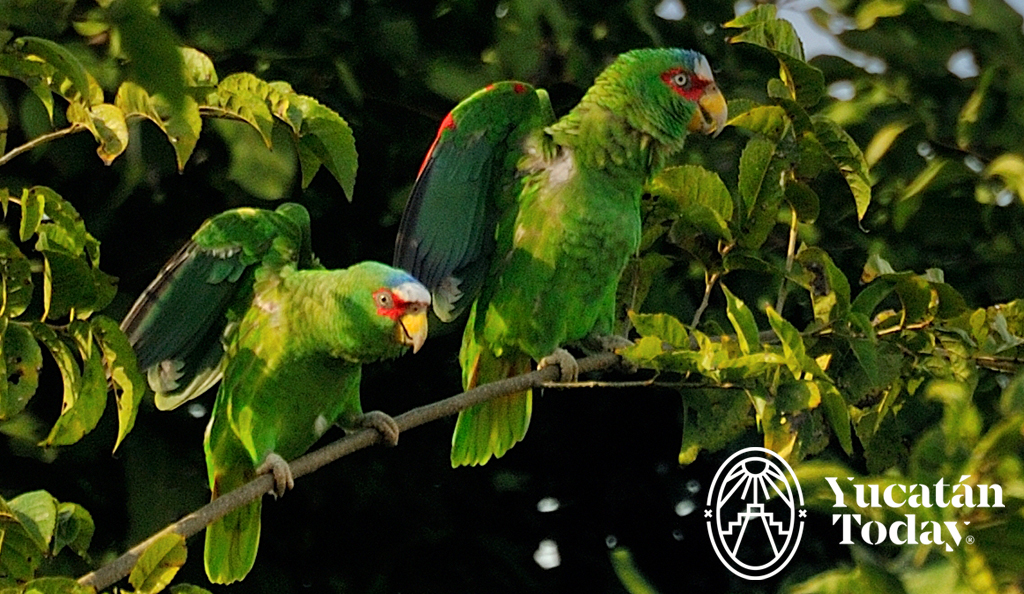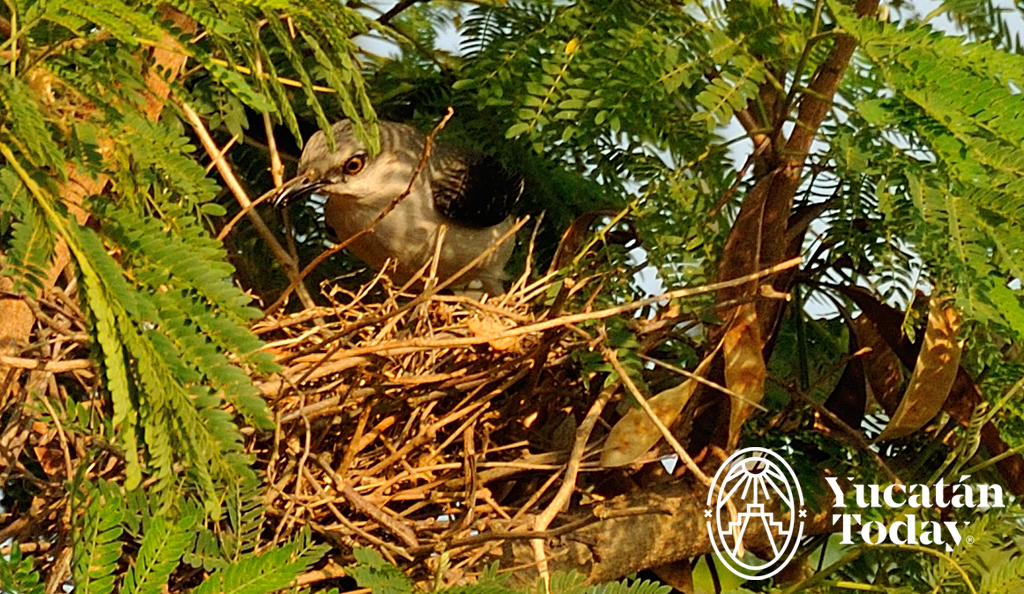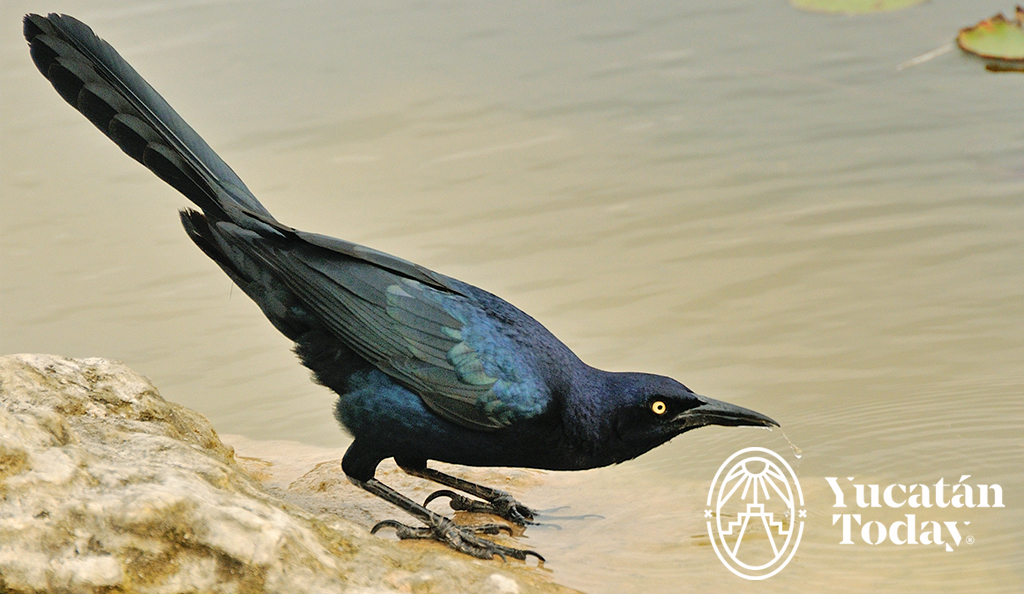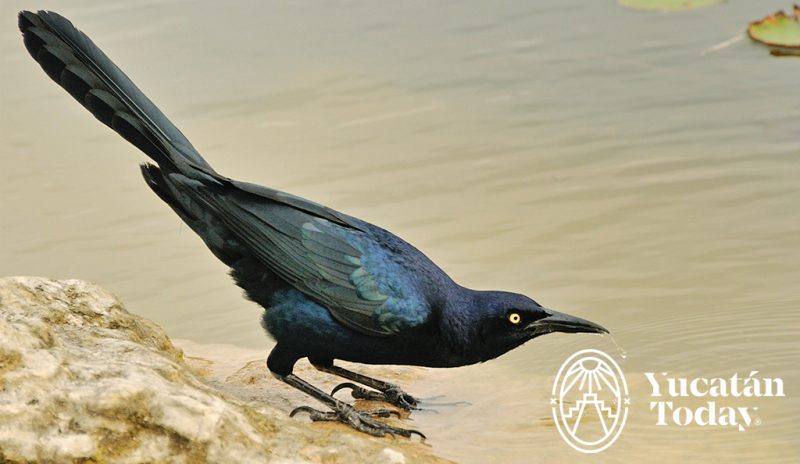When I escaped to my parents’ winter home in Florida during college breaks, I enjoyed the whistles, clacks and shrieks of grackles in our backyard. Those calls were synonymous with vacation and warmth.
During my first Merida visit, I heard the familiar sounds of those crow-sized blackbirds again. Wonderful memories flooded my senses. After moving to Merida, I learned these bird calls were made by the slightly larger Great-tailed Grackle, a cousin to the nearby Floridian family of Boat-tailed Grackles.
Adult males are larger and black with iridescent purplish-green feathers than the smaller brown females. In addition, males have distinct, wedge-shaped tails I call “wedgies.” Both sexes have yellow eyes, except the young have brown eyes and look similar to the female.
Anyone walking Paseo de Montejo, our grand avenue of Merida, can hear these raucous rollickers along the tree-lined streets or watch them forage for food on hotel lawns. Venture to the main square or other parks at dawn or dusk and a continuous cacophony blasts your ears. Why are they there? The loud, feathered flockers gather at night in roost trees. I call the males…roosters. In the mornings, smaller flocks separate and disperse for their daily activities, especially to search for food.
Several hang out at Costco hoping and hopping for handouts. These opportunistic feeders are known to eat insects, fruits, seeds, grains, frogs, fish, and even bird eggs and chicks. However, I’ve seen Great-tailed Grackles eat tortilla chips, hot dogs, bread, and other food cast-offs from people.
Although a creature of wetlands and low forests, it’s adapted to live in agricultural areas, towns and villages. In the 1880s, this gregarious species ranged from Mexico down to Venezuela and Peru. Now as one of the fastest expanding boisterous birdies, it breeds almost to the Canadian border. Vagrants wander from British Columbia to Nova Scotia!
During the breeding season, the Great-tailed Grackle alpha male defends his harem of females from other males and performs almost 90% of the mating. In the Yucatan, I would call him the Sheik of Caribe. However, it seems that about 25% are the Sheik’s chicks. Females may mate with lower-ranking males when they feed away from their harem defender.
Sometimes when males stand or perch close together, their bills point skyward. Are they searching for predators or sky gazing? No, the bill-up display is a warning sign of aggression especially during mating season or near food sources.
Although the Yucatan Peninsula has no crows or ravens, locals call this grackle the Mexican Crow or X-kau (Maya). In Mexico, it’s called Zanate. One legend infers Zanate stole seven songs from a sea turtle. The songs represented seven passions of love, hate, joy, sadness, fear, courage, and anger.
In Merida, I hear all of these so-called songs by more than four and twenty blackbirds decked out in the sky.
Happy Birding!
Listen to the loud chorus: http://macaulaylibrary.org/audio/12632
Read more about Yucatan Birds:

Author: Cherie Pittillo
Nature’s wonders inspire Cherie Pittillo, a nature photographer, zoologist, and author. Follow her friendly, feathered journey as she discovers the birds of the Yucatan Peninsula.
¡Receive the latest articles and much more from the best of Yucatán in your email!
Related articles

Cherie’s Bird of the Month: White-fronted Parrot
Amazona albifrons, Sac pol T’uut (Maya) Ack! Ack! Ack! Contact calls of 49 White-fronted Parrots filled the sunset on Nov
Cherie's Bird of the Month: Tropical Mockingbird
Tropical Mockingbird, Mimus gilvus, Cenzontle Tropical (Spanish), chika (Maya) Is it a common trait when traveling to see something that reminds one...





